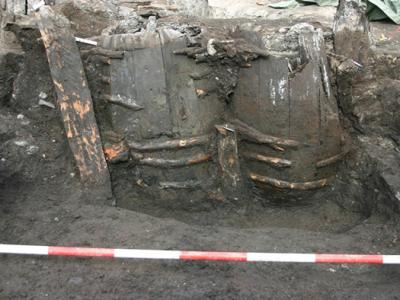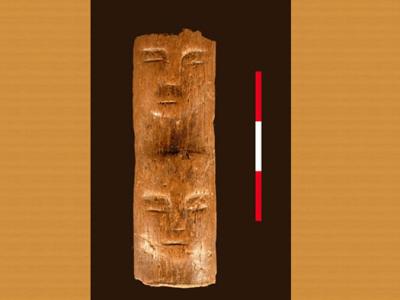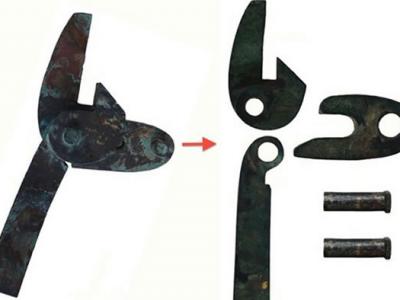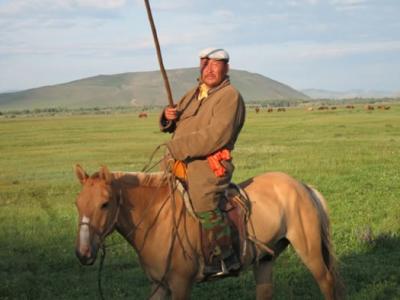J is for Juravenator
Juravenator starki had both scales and simple dinofuzz. Photo by Ghedoghedo, image from Wikipedia.
Juravenator starki was a fluffy little dinosaur. The theropod’s delicate preservation in a 151 million year old limestone slab gives away its primitive plumage, particularly under ultraviolet light. While the two-and-a-half foot long carnivore had pebbly skin often seen among dinosaurs, fine filaments along the specimen’s pelvis and tail indicate that Juravenator was at least partly covered in a coat of simple protofeathers.
Juravenator was named by Ursula Göhlich and Luis Chiappe in 2006, and it was immediately apparent that the dinosaur bore simple “integument.” Within the context of early analyses, the fuzzy appearance of Juravenator made perfect sense. The theropod seemed to be a compsognathid – a lineage of small, predatory dinosaurs already known to have feathery members among their ranks. Since compsognathids such as Sinosauropteryx had feathers, it wasn’t surprising that Juravenator did, as well.
But Juravenator may not be a compsognathid.
Earlier this year, Oliver Rauhut and colleagues described another fluffy, Late Jurassic theropod found in a German limestone quarry. Named Sciurumimus – a tribute to the protofeathers that gave the theropod’s tail a squirrelish look – the juvenile dinosaur appears to have been a megalosaur, or a theropod only distantly-related to compsognathids and other feather-bearing dinosaurs. This moves the origin of dinofuzz further back down the dinosaur family tree, hinting that even theropod dinosaurs distantly-related to birds might have had some kind of wispy body covering in addition to scales.
Strangely, when it was included in the analysis of the dinosaur relationships in the study, Juravenator fell out as a close relative of Sciurumimus. Was Juravenator a megalosaur? Or might the youth of both Juravenator and Sciurumimus make them seem to be close megalosaurian cousins?
Even though the skeletons of both Juravenator and Sciurumimus are beautiful, their exact place on the dinosaur family tree isn’t totally clear. The fact that both animals were juveniles when they died complicates the picture – dinosaurs changed significantly as they grew up, and so some skeletal features are signs of young age rather than membership in a particular group. We need to find adult Juravenator and Sciurumimus to gauge what kind of theropods these dinosaurs were, and whether they were actually closely related. Still, phylogenetic shuffling aside, both of the lovely specimens show that some dinosaurs were unabashedly fluffy by 151 million years ago.
by Brian Switek
Brian Switek is a freelance science writer and author of the critically acclaimed books Written in Stone (2010) and My Beloved Brontosaurus (2013). He has published in Slate, Nature, the Wall Street Journal, Smithsonian, Scientific American, and more. Laelaps is his writing laboratory, dedicated to sifting through today's natural history and remnants of the deep past for tales of evolution, extinction, and survival.












